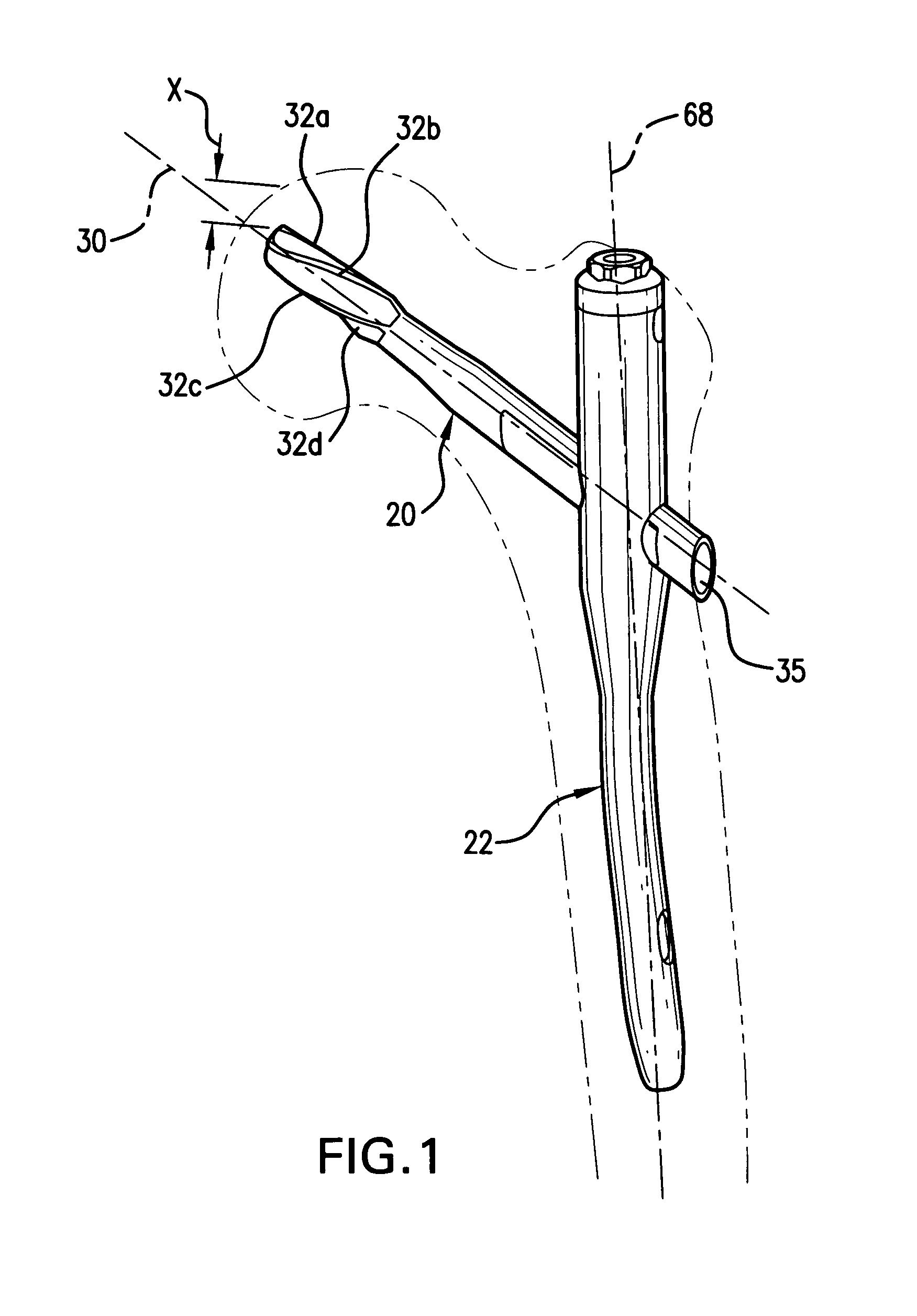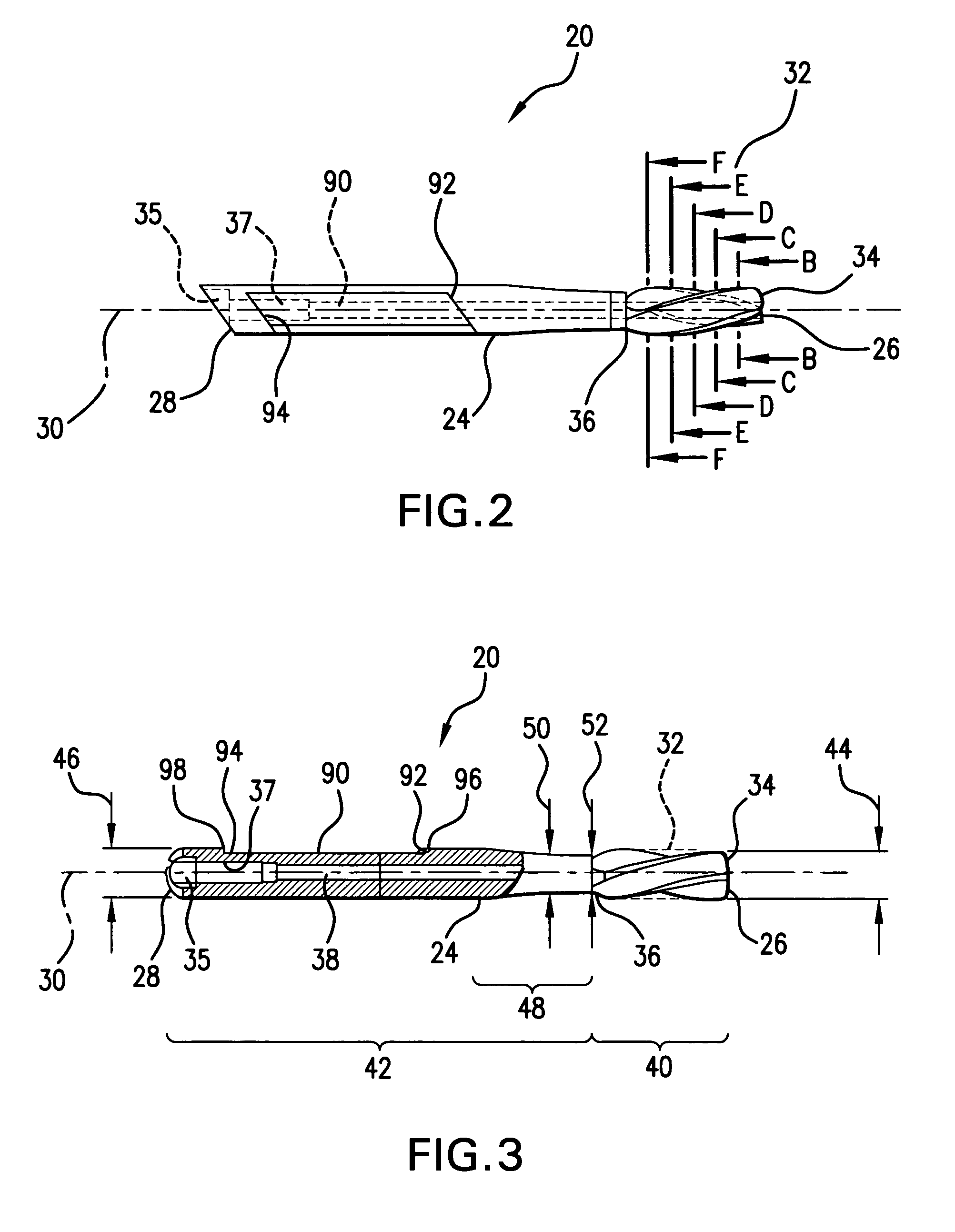Bone fixation system
a technology of fixation system and bone, which is applied in the field of bone fixation system, can solve the problems of high death rate, frequent complications, and misalignment, and achieve the effect of preventing the rotation of the second implant and preventing the sliding of the second implan
- Summary
- Abstract
- Description
- Claims
- Application Information
AI Technical Summary
Benefits of technology
Problems solved by technology
Method used
Image
Examples
Embodiment Construction
[0035]Referring to FIG. 1, a fracture fixation implant 20 according to one embodiment of the present invention is shown implanted in a femur and coupled to a second fracture fixation implant 22, which is shown for illustrative purposes as an intramedullary nail 22. Implant 20 may be used in conjunction with an intramedullary nail 22 or other fracture fixation member to treat orthopaedic trauma, impending bone fractures, and bone fractures. For example, implant 20 may be used to treat intertrochanteric fractures of the femur. Implant 20 is not limited to use in conjunction with an intramedullary nail 22, however, and may be used alone or in conjunction with any number of implants, bone plates, etc., known to one of ordinary skill in the art. Furthermore, the present invention is not limited to treatment of the femur, and may be used to treat any of the bones in the human and / or animal bodies.
[0036]Referring to FIGS. 2 and 3, implant 20 includes a shaft 24 having a proximal end 26 and...
PUM
 Login to View More
Login to View More Abstract
Description
Claims
Application Information
 Login to View More
Login to View More - R&D
- Intellectual Property
- Life Sciences
- Materials
- Tech Scout
- Unparalleled Data Quality
- Higher Quality Content
- 60% Fewer Hallucinations
Browse by: Latest US Patents, China's latest patents, Technical Efficacy Thesaurus, Application Domain, Technology Topic, Popular Technical Reports.
© 2025 PatSnap. All rights reserved.Legal|Privacy policy|Modern Slavery Act Transparency Statement|Sitemap|About US| Contact US: help@patsnap.com



